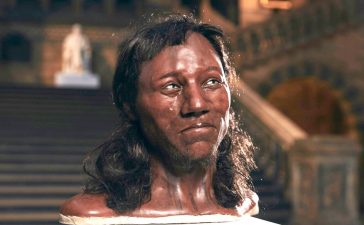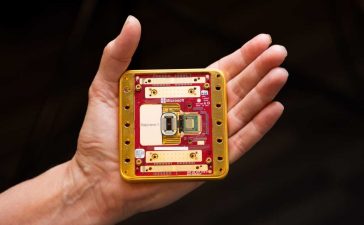Some time about 100m years ago in what is now an Australian opal field, a weird, furry, egg-laying, rabbit-sized mammal was gliding through a waterhole across a massive polar floodplain.
This mammal – Opalius splendens but which scientists have thankfully blessed with the nickname “echidnapus” – was among the ancient descendants of one of the planet’s most unique orders of animals, the monotremes.
New scientific research released on Monday showed the echidnapus had characteristics of the last two remaining members of their tribe.
Modern Australia is the stronghold for the only monotreme species – the supremely odd platypus, a nipple-free Aussie mammal with a duck-like bill, and the spiky echidna with its over-stretched snout, which also lives on New Guinea.
But the discovery of echidnapus and two more ancient monotremes in the opal field fossils means at least six monotreme species existed in what is now the far north New South Wales outback.
“It’s like discovering a whole new civilisation,” said Prof Tim Flannery, the lead author of the new research, published in palaeontology journal Alcheringa.
“Today Australia is known as the land of the marsupials, but discovering these new fossils is the first indication that Australia was previously home to diversity of monotremes.
In the region where the fossils were found, “there are no other kinds of mammals. It suggests Australia experienced an age of monotremes when they were the dominant mammal.”
The discovery of the opalised jawbones in an area known as Lightning Ridge almost never happened. Elizabeth Smith, of the Australian Opal Centre, and her daughter Clytie found the specimens about 25 years ago while going through the tailings heap of an opal mine.
“It was largely luck that I found the pieces,” Elizabeth Smith said. “But I immediately knew it was a mammal and therefore really significant.”
She donated the specimens to the Australian Museum at about the turn of the millennium but they’ve only been described now in the Flannery research. These days her finds and those that are sent to her by opal miners stay at the not-for-profit opal centre.
“These specimens are a revelation,” Smith said. “It’s enormously exciting. They show the world that long before Australia became the land of pouched mammals, marsupials, this was a land of furry egg-layers – monotremes.”
The three species are described in the journal from opalised jaws dating back to an age of the Cretaceous between 102m and 96.6m years ago.
A second new ancient monotreme, Parvopalus clytiei, was a tiny terrestrial mammal. A third, Dharragarra aurora, looked “remarkably like a modern platypus,” Flannery said.
Prof Kris Helgen, director of the Australian Museum Research Institute, said Opalios splendens had characteristics of the earliest known monotremes but other features pointing to the modern echidna and platypus.
after newsletter promotion
He said: “Its overall anatomy is probably quite like the platypus but with features of the jaw and snout a bit more like an echidna – you might call it an ‘echidnapus’.”
Echidnapus could not have been the immediate ancestor because it was too old, said Flannery. But it had a narrow beak like an echidna and five molars like a modern platypus.
One curiosity of the modern platypus – an animal so odd that 18th-century British scientist George Shaw thought it a potential hoax – is how it lost its teeth (juveniles lose their molar teeth as they become adults).
“It’s a mystery we think we may have solved,” said Flannery. About two million years ago, the Australian water rat – known as the rakali – arrived in Australia.
This, Flannery said, probably caused the platypus to look for “softer, slipperier food best processed with the leathery pads that adults use today.”
He said all six of Lightning Ridge’s monotremes “hold potentially evolutionary destinies” that could have split off in all manner of directions, but were “deep distant ancestors and relatives of the current living monotremes”.
But some time between 100m and 54m years ago, the monotreme diversity disappeared. “Was it as a result of the asteroid that killed the dinosaurs? Did they come into competition with the marsupials? We don’t know, but there was change.”
Dr Matthew McCurry, curator of palaeontology at the Australian Museum, said: “We have very few monotreme fossils, and so finding new fossils can tell us more about where they lived, what they looked like and how changes in the environment influenced their evolution.
“Every significant monotreme fossil currently known fits into this evolutionary story, from Teinolophos, the tiny shrew-like creature in Antarctica 130m years ago, to the present day.”












